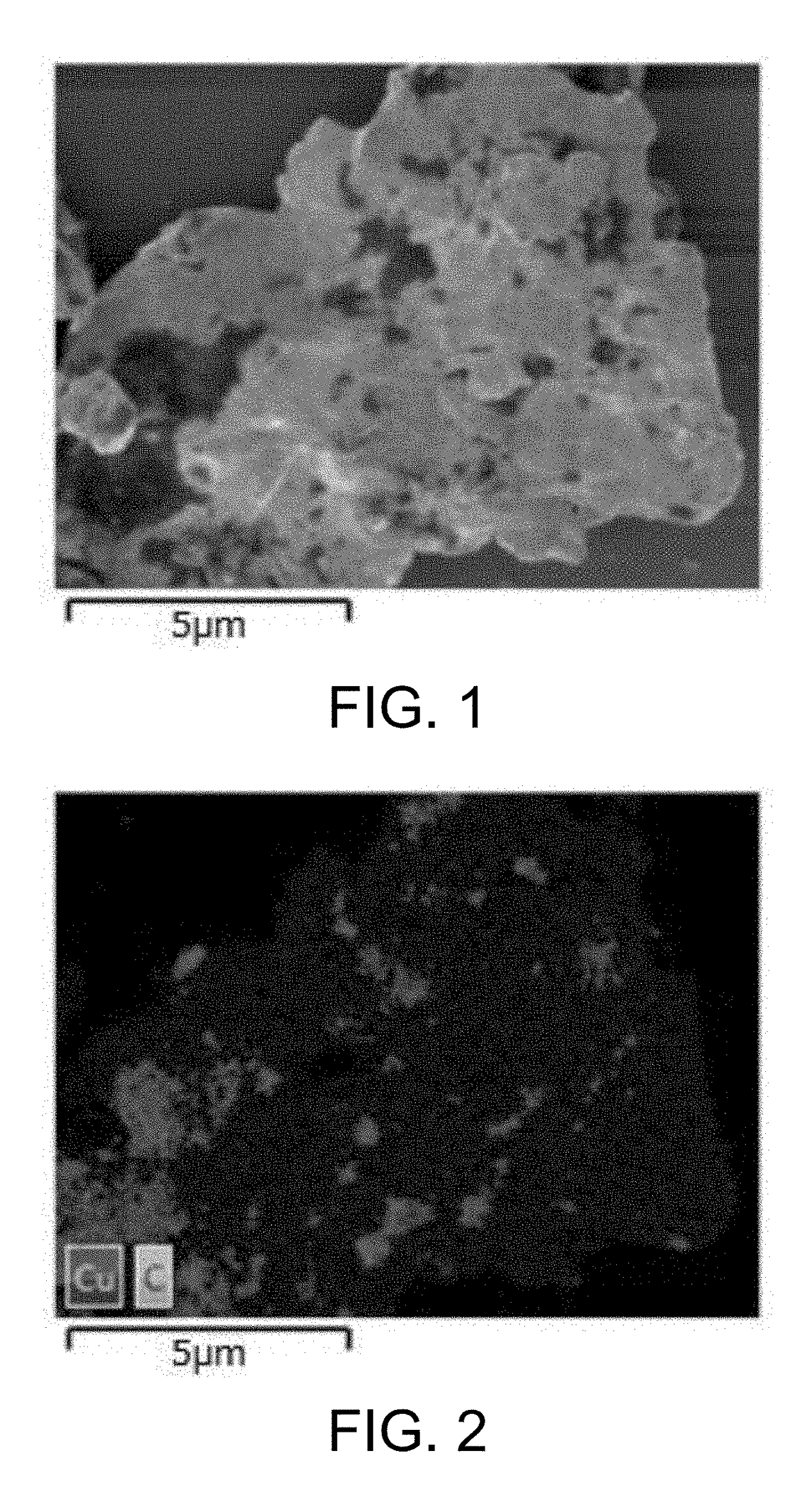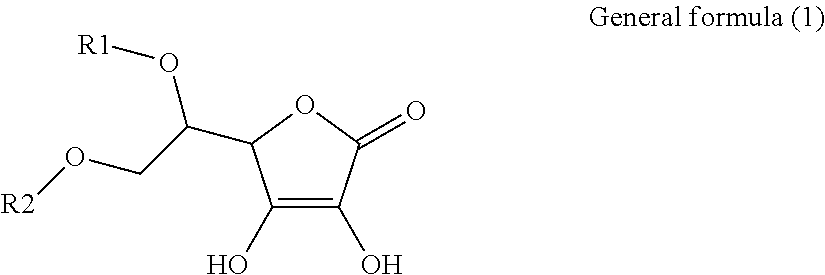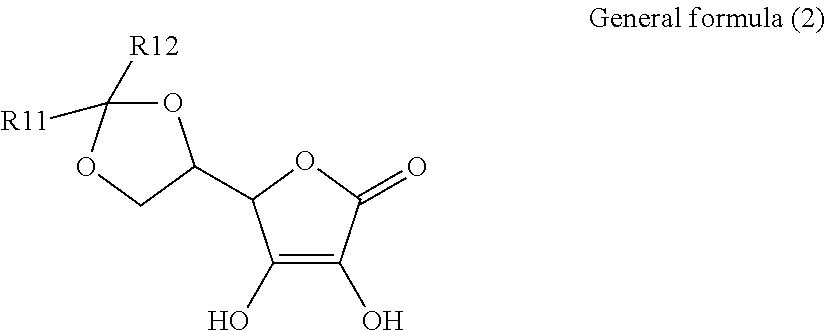Electroconductive composition, method for producing the same, and electroconductive material
- Summary
- Abstract
- Description
- Claims
- Application Information
AI Technical Summary
Benefits of technology
Problems solved by technology
Method used
Image
Examples
example 1
[0205]Using a Planetary Mixer, 25 parts of a solution of binder resin C1 (solid content of 40% by mass), 0.68 parts of dispersant D1 (solid content of 80% by mass), 90 parts of the above-described surface-treated copper powder (AB) (containing 85.7 parts by mass of copper powder A1, and 4.3 parts by mass of ascorbic acid derivative B1), and 3.2 parts of diethylene glycol monobutyl ether acetate were mixed, and then dispersed using a triple roller to prepare an electroconductive composition. The obtained electroconductive composition contained about 84.6% of a nonvolatile content, and the surface-treated copper powder (AB) accounted for about 89.5% of the nonvolatile content, an epoxy resin accounted for about 10%, and the dispersant accounted for about 0.5%.
example 2 to 22
[0206]Electroconductive compositions having compositions shown in Tables 1 to 3 were prepared in the same way as in Example 1, except that types and amounts of the copper powder (A) and the ascorbic acid derivative (B) were changed to obtain surface-treated copper powders (AB), and then types and amounts of the dispersant (D) were changed. In all surface-treated copper powders (AB) used in Examples 2 to 22, it was found that ascorbic acid derivatives (B) were present and adhered to the surface of copper powders, as in the case of Example 1.
examples 23 and 24
[0207]In a similar manner to Example 1, 25 parts of a solution of binder resin C1 (containing 10 parts by mass of the binder resin C1), 0.68 parts of dispersant D1 (containing 0.54 parts of nonvolatile content), 81 parts of the above-described surface-treated copper powder (AB)(containing 77.1 parts by mass of copper powder A1 and 3.9 parts by mass of ascorbic acid derivative B1), 9 parts of anhydrous copper formate, and 3.2 parts of diethylene glycol monobutyl ether acetate were mixed using a Planetary Mixer, and then dispersed using a triple roller to prepare electroconductive compositions. The obtained electroconductive compositions contained about 84.6% of nonvolatile contents, and surface-treated copper powders (AB) accounted for about 80.6% of the nonvolatile contents, epoxy resins accounted for about 10%, and dispersants accounted for about 0.5%.
PUM
| Property | Measurement | Unit |
|---|---|---|
| Percent by mass | aaaaa | aaaaa |
| Percent by mass | aaaaa | aaaaa |
| Percent by mass | aaaaa | aaaaa |
Abstract
Description
Claims
Application Information
 Login to View More
Login to View More - R&D
- Intellectual Property
- Life Sciences
- Materials
- Tech Scout
- Unparalleled Data Quality
- Higher Quality Content
- 60% Fewer Hallucinations
Browse by: Latest US Patents, China's latest patents, Technical Efficacy Thesaurus, Application Domain, Technology Topic, Popular Technical Reports.
© 2025 PatSnap. All rights reserved.Legal|Privacy policy|Modern Slavery Act Transparency Statement|Sitemap|About US| Contact US: help@patsnap.com



